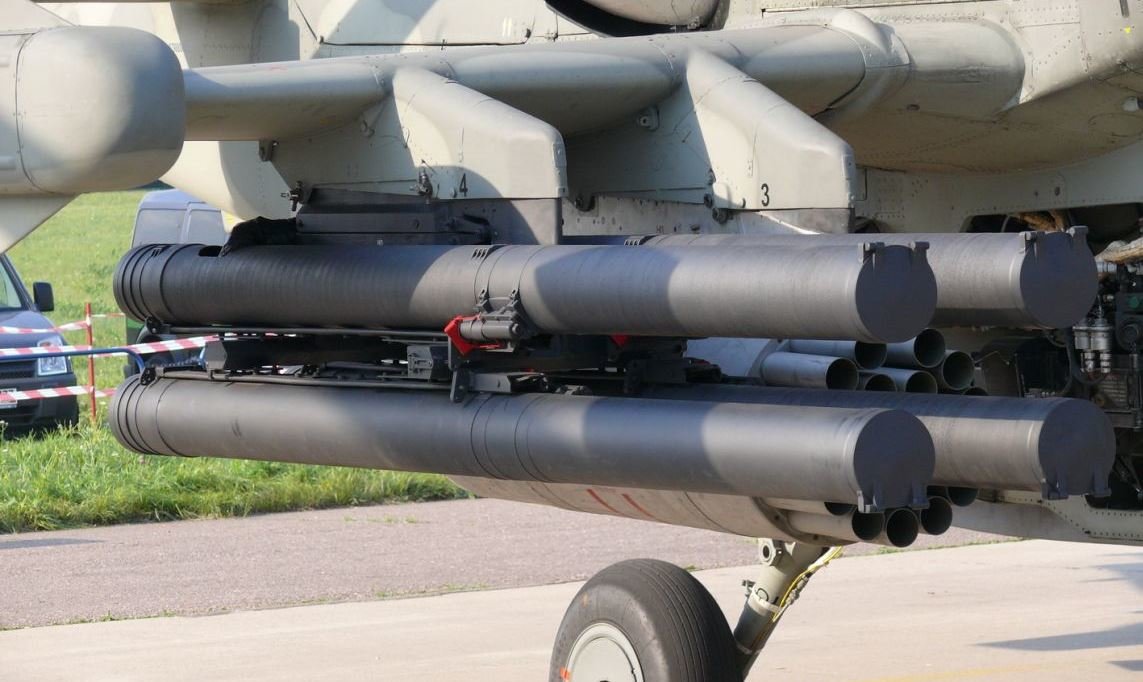
© bastion-karpenko
Russia's military operation in Syria has been in the focus of world media ever since it was launched in late September, 2015. It was the first time the Russian Federation's military saw real combat while operating far from home.
The anti-terrorist campaign is unparalleled in terms of complexity. It also provides a unique opportunity to test the brand new cutting-edge weapons systems on the battlefield.Helicopters play the role of working horses in Syria operating around the clock to protect the infrastructure, save people while conducting search and rescue operations and striking the enemy targets with great accuracy. These rotorcraft are irreplaceable. Russia's defense industry has come up with new formidable weapons to make helicopters more powerful on the battlefield. The Hermes-K is a good example. It has just arrived in Syria to display its unique performance capabilities.
The Ka-52K Katran attack helicopters based on the
Admiral Kuznetsov aircraft carrier deployed near Syria's coastline
will conduct first tests of Russia's latest superweapon - the Hermes-K extreme-range anti-tank guided missile (ATGM) system developed by the well-known worldwide Tula Instrument Design Bureau.
The weapon could have been tested using ground-based platforms but the decision was taken to assess its performance in more difficult, ship-borne air operations.
The ATGM features a modular, solid fuel, supersonic, bi-caliber, multi-purpose, multi-stage fire-and-forget guided missile with a high-powered booster. Specifications: weigh-130kg, length-2,500mm, diameter: booster stage -210mm, sustainer stage - 130mm.
The Hermes-K boasts an outstanding operational range of 30km (20mi). For comparison, the US Hellfire's range is 8km (5mi). The Russian Vikhr ATGM has a range of 8-10km (5-6.2mi). The Hermes-K's missile can be equipped with either a cumulative or high-explosive warhead. Up to 12 missiles can be launched in a salvo.
Capable of infrared homing and laser guidance, the Hermes can track and kill over-the-horizon targets, which include armored vehicles, command posts, fortifications of various types, production facilities, manpower, surface targets and low-speed flying vehicles such as helicopters to be engaged day and night. If laser guidance fails, infrared sensors will guide it onto the heat-emitting source.
The ATGM can be equipped with a high-explosive high-fragmentation warhead weighing up to 28kg or an armor-piercing warhead capable of 1m penetration. The missile's high-explosive/fragmentation warhead has a diameter of 130mm and a mass of 50kg and explosive power equivalent to 15kg of TNT.
In the future the missiles can be also equipped with miniature radars that would provide even greater precision.The speed is almost hypersonic. The missile's first stage is a solid rocket engine to accelerate the warhead to a speed of
4680 km/s. The rocket climbs to a height of up to 28 km (17.3 mi) till the first stage separates with the killing element guided on its own. At the stage of descending the speed of the warhead is within the range of 1.5-2M.
The Hermes has a fire control system with at least four target channels. The guidance is done with the help of Arbalet onboard radar, the stabilized optical electronic guidance system GOES-451 of the Katran helicopter and the tactical information exchange radio channel receiving information from other sources, including the Tu-214R reconnaissance aircraft. Laser can illuminate at least two targets at a distance of 25km.
The system can engage air targets at a range of up to 15km. In theory, the homing system allows interception of air targets at a distance of 100km. The planned installation of new phased array radar in combination with the R-77/RVV-SD missile will make a long-range air-to-air engagement possible.
The operational deployment of the Hermes-K in Syria will save lives. The range of Vikhr 9k121 ATGMs used now is 8-10km to make it vulnerable to portable surface-to-air systems (MANPADs). It has been recently
reported that the MANPADS have appeared in the inventory of rebels. The Hermes can strike the militants at safe distances to greatly enhance the effectiveness of operations.
Israel's Spike-NLOS system is the only system with comparable range but it can be mounted on wheeled chassis while the Hermes type ATGMs can be installed on ground tracked vehicles, helicopters and surface ships. This capability makes the Hermes unique - the weapon beyond compare.
The performance will be closely watched by potential customers in the Middle East, Asia and elsewhere. Egypt has purchased the French Mistral amphibious assault ships originally built for Russia. France had to terminate the contract for the supply of the ships to Russia under pressure from NATO allies. Cairo has bought a batch of 50 Russian Katran helicopters from Moscow. The helicopters can be armed with the Hermes-K ATGMs.
With the amphibious ships in inventory, Egypt will acquire power projection capability. The powerful Ka-52 armed with Hermes ATGMs invulnerable to MANPADs will be a powerful strike component to make landing operations successful.
India and Pakistan are also among potential buyers.
A range exceeding that of the weapons defending a typical target, the ability to penetrate 1,000mm of armor operating round-the-clock in all-weather conditions make the Hornet the best ATGM in the world. This is a weapon that terrorists should fear.
4,800km/hr not 4,800kh/sec . . .